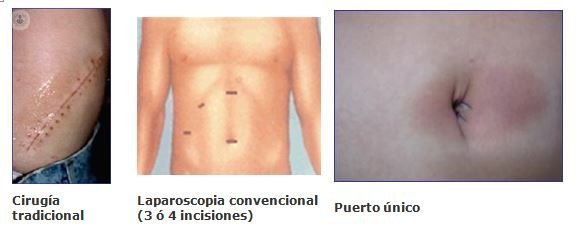Why the stones form in the gallbladder?
Written by:Gallstones or Cholelithiasis is stone formation inside the gallbladder, which affects between 15 and 25% of adult women in Spain. The gallbladder is an organ that is responsible for secreting bile formed in the liver to eject the intestine to digest fats. When the stones (also called stones) are formed in the bile ducts, they are called choledocholithiasis.
Symptoms of gallstones
Gallstones usually an asymptomatic disease; in fact, less than 20% of patients have symptoms. : However, when stones obstruct any critical area of the gallbladder biliary colic, an episode of acute pain characterized by the following symptoms occurs
- Sickness
- vomiting
- Abdominal pain
- Yellow skin (jaundice)
- sudden pain
- Fever
- Tenderness
Risk factors for formation of gallstones
There are no specific causes of the occurrence of gallstone, but hereditary factors and other conditions that increase the risk:
- To be a woman
- Obesity
- Being older than 40 years
- Diseases such as diabetes, congestive gallbladder to empty bile liver cirrhosis or biliary tract infections
- Hormonal or cholesterol-lowering drugs
Prevention of gallstones
To reduce the risk of cholelithiasis, it is recommended to control weight (moderately, as lose weight quickly also favors the appearance of gallstones), exercise and a balanced diet, including:
- Monounsaturated fats are found in olive oil and avocados and fish. should not be confused with saturated fats, which are found in fatty meats, butter and other animal products and may increase the risk of gallstones and raise cholesterol.
- Fiber: is found in wholemeal bread, cereals and vegetables.
- Fruits and vegetables: it is advisable to consume large amounts to help prevent gallstones.
- Nuts: as peanuts, almonds or walnuts.
- Avoid excess sugar and carbohydrates: they can cause gallstones.
- Alcohol and coffee: moderate consumption can prevent the formation of gallstones.
- Vitamins: especially vitamin C, vitamin E and calcium, which reduce the risk of cholelithiasis.

Treatment of gallstones
When a patient with gallstones have no symptoms, it is much discussed what the appropriate treatment should receive. Thus, the specialist in Gastroenterology perform a particular type of treatment depending on the patient 's condition.
If the patient does not undergo surgery it can take a few tablets bile acid compounds to destroy gallstones. They can be taken for both treatment (two or three times a day) and prevention (twice a day), but to take effect must be taken for months.
On the other hand, when the patient has the symptoms mentioned above, the most appropriate technique is surgery, particularly laparoscopy, since, thanks to technological advances, is increasingly minimize risks and complications.
The latest techniques are minilaparoscopy and single port surgery, which, like conventional laparoscopy, consisting remove the gallbladder and therefore also the stones found inside but with the difference being much less invasive.
Thus the minilaparoscopy is to practice three or four incisions of only 3 mm., While using single port surgery, one incision is made, usually through the navel.
As the umbilical area and virtually painless bleeding, with millimeter incision and you can get a large hole through which to introduce instruments that will remove the gallbladder.


